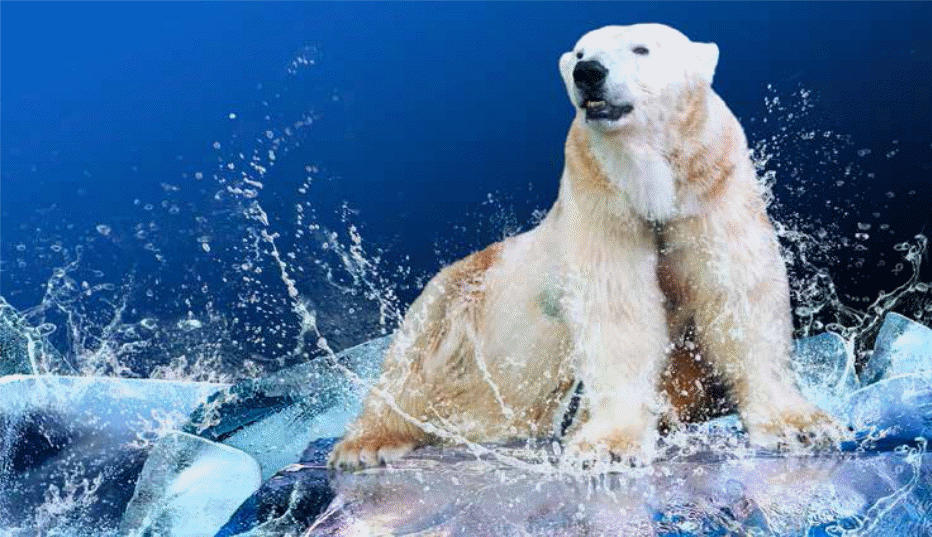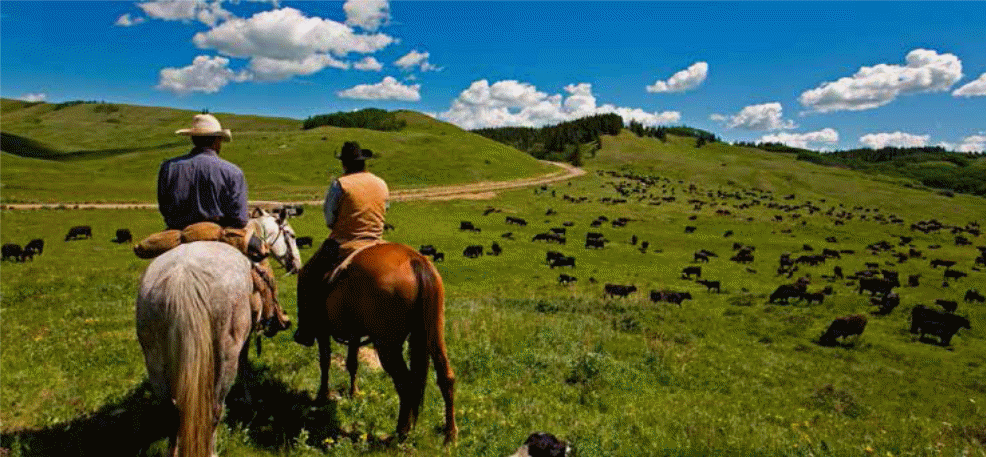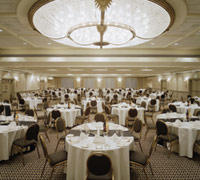Introduction
Tourism is one of the largest industries in the world; several scholars and organizations have come up with different definitions of the term. Australian Bureau of Statistics, 2014) defines tourism as “an economic, social, and cultural occurrence that involves the movement of people to areas outside their usual environment for business or personal purposes for less than a year.” This industry has different sectors that handle the expansive services within it. The eight sectors in this industry include accommodation, travel trade, tourism services, attractions, transportation, food and beverage, events and conferences, and adventure tourism and recreation (Australian Bureau of Statistics, 2014).
Accommodation
This is one of the fastest developing sectors in tourism industry. Accommodation business entails hotels, resorts, guesthouses, inns, yachts, villas and bungalows, and campgrounds (Department of Tourism and Culture, 2013). Categories of job positions in this segment vary depending on the nature of enterprise. The careers are sales manager, housekeeper, maintenance personnel, financial comptroller, reservation clerk, front office manager, and general manager.
Travel Trade
This division does not only assist other segments in the industry through sales, but also through bookings. Tour operators prepare vacation packages, which the tourists buy from the travel agents (Department of Tourism and Culture, 2013). Vacation packages include accommodation, airline ticket, tours, meals etcetera. This sector employs reservation agents, sales promoters, tour operators, tour guides, travel counselors, and travel agents.
Tourism Services
This sector entails corporations, associations, establishments, and government agencies that address fundamental issues in the field of tourism. Tourism services are further divided into tourism educators, tourism trainers, consultants, information centers, BVI tourist board, and ministry of tourism. People working in this sector are custom and immigration officers, photographer, lecturer, travel writer, researchers, director of tourism and minister of tourism.
Tourism Attractions
Tourism attractions are things that entice visitors and bring about revenue. Attractions comprise of cultural attractions, heritage homes, museums, historic sites, art galleries, halls of fame, aquariums, water parks, zoo, amusement parks, casinos, and botanical gardens. The attractions do not only entertain, but also educate visitors. Careers in this sector are museum manager, visitor services manager, maintenance manager, park wardens, and retail sales clerk.

Transportation
Transportation sector provides comfort, movement, and safety of tourists. The services in this sector are dependent on the types of movement used by visitors, which include air, ground, rail, and water (Department of Tourism and Culture, 2013). Some types of transportation services are air carriers, ferry companies, marinas, cruise lines, water taxis personal vehicles, motor coach travel, taxicab operations, bike rentals, and vehicle rental companies. The different modes of travel provide job opportunities to yacht skippers, taxi drivers, rental agents, travel agents, airport managers, flight attendants, and pilots.
Food and Beverage
Food and beverage sector entails purchasing and storing food and beverages, preparing and serving food and beverages, and welcoming visitors. Establishments found in this sector are nightclubs, caterers, pubs, restaurants, and coffee shops. Most people especially the youths start their first job in this sector as chefs, waiters/waitresses, club managers, bartenders, and food and beverage managers (Department of Tourism and Culture, 2013).

Adventure Tourism and Recreation
There are instances when visitors request active activities and recreational experiences where they interact with the natural environment. Amenities for adventure tourism are parks, sports facilities, fishing facilities, water sports and marine facilities. Individuals work in this sector as water-sports managers, sports coaches, sailing instructors, sales clerks, and scuba diving instructors.
After giving an overview on the eight sectors in the tourism industry, the research will now focus on events and conferences sector, as well as its subsectors, which includes revenue sources, cost of operation, target audience, advertising methods, and how the barriers to travel affect this sector.
Events and Conferences
The knack to ably plan and execute an event or a conference is every company’s objective. This sector contributes largely to the economy of a given country since other sectors such as transport, food and beverages, and accommodation are involved. Notably, these sectors also have their own charges. Fairs, festivals, meetings, conferences, trade shows, and convections are various types of events and conferences. Job opportunities in this sector include translators, registration clerks, sales representative, special events coordinators, public relations managers, meeting planners, and exhibit designers.
Events and conferences sector plays an imperative role in the economy of any given country. During various functions, other sectors benefit as well. For instance, visitors may need to move to and from the conference or event place. In this situation, the transport sector comes in handy. They need to rest, eat, and be entertained. Therefore, sectors like the food and beverages and accommodation are involved.
Subsectors in Events and Conferences Sector
Subsectors in Events and Conferences entail special events, convections, meetings, trade shows, conferences, and incentive trips. Special events are emerging in large numbers and some of them have become famous and successful hence becoming attractions not only nationally, but also internationally. Events like the Calgary Stampede and Olympic Games are world known events, and require humble time of preparation and planning. Smaller events organized by different communities like sporting events, fundraisers, celebrating culture and ethnic roots may not require radical preparation.
Many companies send their employers to networking convections, sales meetings, and conferences for training, sharing ideas, solving problems, researching, and cultivating new strategies. Some corporations display their merchandises at such events like trade shows. An example of such a company is The Rimrock Resort Hotel found on Sulphur Mountain in Banff National Park, Alberta state, Canada. Rimrock does not only offers events and conferences services, but also offer hotel accommodation, food and beverages, dining and lounges, Spa services, and Banff activities.
Convection facilities
The Rimrock Resort Hotel has a Wildrose Ballroom that can comfortable accommodate six hundred visitors. The ballroom can be converted to three separate salons; therefore, it can handle more than one event at ago. Hawthorn is another function space that can be sectioned into three; the room is installed with audio-visual equipment and drop-down screens. In addition, they have an executive boardroom that accommodates 18 people. The boardroom has executive chairs and a drop down screen as well. Other meeting space available is Rosemary that caters for 12 people, Lobela that facilitates 8 people, Laurel for Children’s programs and, Yarrow that handles approximately 80 people.

Conference and Banquets
The Rimrock Resort Hotel has a well-trained workforce, with technical experience that gives initialed and specialized attention to every detail given by a client. This results in smooth planning and preparation of conference regardless of its complexity. The devotion to every customers detail has promoted the company’s name, and they now have annual customers from some finest companies in North America. Their exceptional performance and services has won them Smart Meetings Platinum Choice Award (The Rimrock Resort Hotel Official Site: Rimrock Wedding, 2014).
Conferences and banquet services offered by The Rimrock Resort Hotel include access to Wildrose Ballroom using automobile, fully equipped on-site audio-visual services plus internet and teleconferencing facilities, meetings rooms facing the beautiful mountains, splendid delivery and shipping amenities, well-trained special conference service managers that aid in planning and organization, as well as amenities to put up a registration desk.
Special events
The Rimrock Resort Hotel organizes special events, especially wedding ceremonies that must be accompanied with guestrooms and food and beverage with the exclusion of wedding cakes (The Rimrock Resort Hotel Official Site: Rimrock Wedding, 2014). They have a function room that entails black framed mirror centerpieces, glassware, votive candles, black or white linen napkins, tables, chairs, and black or white table linens. Coat rank, tissues, water stations, and mints are provided on request. Guest room services are available for visitors (tourists) who wish to spend a night before or after the wedding ceremony at reduced rates.
Additionally, they have an enthusiastic staff that arrange for comforting and pleasant atmosphere during rehearsal dinners. Rehearsal dinners can be held at Divas, Larkspur, Eden, and Primrose lounges. The Rimrock Resort Hotel has a room for children to relax after dinner. The room contains pillows, blankets, chairs, TV, and snacks. A recommended external company can offer children services upon request. The guests can also enjoy fresh bunch from the hotel the morning subsequent to the wedding before going home at affordable rates. Moreover, the Rimrock Spa has a distinctive deal for all treatments where the groom and bride are pampered before and after the wedding ceremony.

Sources of Revenue
The components of a budget constitute three primary elements, namely expenses, income and nets income or net loss. Revenue makeups the funds received into the business by substitution for products by an enterprise. For event organizers and conferencing, sources of revenue can be through various ways, some of which are discussed below.
The greatest generator of revenue to events and conferences are through ticketing, Registrations and Membership. Events and conferences generate income through sale of entrance tickets, registration for participation as well as membership charges. Where the event aims to attract audience, the event organizers generate their income from collection of entrance charge or by sale of entrance tickets. However, when the event does not call for audience, the event organizers generate income through registration by the participants. In certain instances, the events or conferences are strictly for members of a particular group; therefore, revenue is generated by the membership charges (Murphy, 2009).
Similarly, events and conferences can generate revenue through sponsorship. Most of the documented events and conferences collaborate with corporations as well as other organizations for mutual benefits. While these corporates may chip in to cater for expenses that the events are likely to incur, event organizers may create signs, booths, or other forms of display that promote the sponsors on reciprocation of the financial assistance accorded. Depending on the terms of agreement, the sponsors may fund the event to the tune that surpasses the operation cost, thereby generating revenue to the organizers (Greenwell, Danzey-Bussell, & Shonk, 2014).
Likewise, Rimrock Resort Hotel generates its revenue through sales of foods and beverages. While the hotel hosts various events, despite the routine sales of beverages and food, the attendance for a specific event may purchase concession for refreshment as they participate in their course (Murphy, 2009). Markedly, this creates an additional revenue scheme for Rimrock Resort Hotel.
Another outstanding revenue source to Rimrock Resort Hotel is corporate hospitality. Conglomerates and other prominent establishments at times direct concern in corporate hospitality, thus instructing hotels to allocate special space and seats for selected personnel plus their clienteles, spouse, families, and friends. These corporate hospitality packages boost the revenues for such hotels, thus forming a significant revenue source to this sector of tourism (Murphy, 2009).
Media rights are an additional source of revenue to event and conferences sector of tourism. It is obvious that not everyone can manage to attend events however much they might be interested. Therefore, most often, when the event appeals to a larger population, the admirer who cannot attend the live event may choose to watch the proceeding on television. For this reason, event planners may confer with a range of media channels, consequently substituting the privileges to air such contents. This could be done at an agreed cost. Accordingly, exchange of media rights is a source of revenue to this sector (Greenwell et al., 2014).
The Costs Associated With Operation
There are a number of costs associated with events and conferencing. Some of the common costs in this subsector are highlighted below.
Advertisement cost
While event organizers aim to maximize their gain out of their events, clearly the number of attendees is directly relative to the income generated. This is because the major income for this sector comes from the tickets, membership, or registration fees, which all depend on the number of attendees. Therefore, to raise the turnout, the organizers must increase the awareness of the event or conference. Logically, to increase awareness, there is need to advertise the event (Murphy, 2009).
Consequently, like other organizations, the Rimrock Resort Hotel also sustains advertisement expenses. Whereas corporate hospitality is identified as an income generator to the Rimrock Resort Hotel and other related firms, Murphy (2009) ascertains that special seats and space demands for extraordinary treatment. Therefore, whenever the firm gets an order for such events, they are obliged to hire specialized attendance.
In addition, such events may require additional packing space in order to satisfactorily appeal to their customers, the firm may pay for additional parking space as well as security to their customers’ vehicles. Moreover, to facilitate traffic flow, the firm may hire or engage new employees to direct traffic in order to help their visitors to the venue of the events. These are in addition to the regular service providers who are also an expense to the firm.
Target Audience
Even though tourism is a dynamic and complex market making it difficult to identify with and retain clients, McKee (2012) notes that the Global Tourism Watch study and EQ research have identified a few major targets of focus for Rimrock Resort Hotel namely learners, conferences, and enthusiastic indulgers. As a result, Rimrock Resort Hotels focus their advertisements in the regions where their brand leads and yields the maximum proceeds. In their customer segmentation, Rimrock Resort Hotel like most of the Canada tourist Resorts identify itself majorly with twelve countries globally. The countries that Rimrock Resort Hotel mostly identifies with are in Europe, America and a few in Asia and Australia. In specific, they include Brazil, France, Germany, Mexico, Australia, India, China, Japan, South Korea, the US, and the UK.
Rimrock Resort Hotel like most of the Canadian tourist sector advertises through a travel trade development by utilizing Canada Tourism Commission (CTC) that entails Canada Specialist Program and Brand Canada Creative Library. McKee (2012) points out that Canada Specialist Program is both an education program as well as a broad trade development incorporated with other marketing components. This includes stating specific goals that makes each resort outstanding. This program educates both travel agents and sales and tour guides, thus ensuring that customers are directed to areas of their relevance interest.
In addition, Canada Specialist Program entails comprehensive modules of travel as well as itinerates that pertains the relevance advantageous one site have over the other. This criterion ensures that Rimrock Resort Hotel remains relevant to the advertisement process while, at the same time, differentiating it to other Canadian tourist resorts. Consequently, this advertisement expand the tourists knowledge about different resorts, and as a voluntary choice, the method remains relevant in this sector, hence proving effective for the case of Rimrock Resort Hotel that has several advantages over their competitors.
In addition to the traditional advertisement discussed above, Rimrock Resort Hotel as a firm that targets literate learners, as well as youthful generation, has installed an internet wireless connection in the premises – a tool that is common in the modern days. According to Dolniar (2002), use of social media is rapidly emerging as an invaluable marketing and advertisement tool. With the involvement of social media, Rimrock Resort Hotel identifies online audience that might be interested in travelling or holding conferences in Canada.
Through this platform, they can engage in conversations that might influence the choice of their destination. Consequently, the Rimrock Resort Hotel can improve where necessary, while at the same time, the company can embrace the strength it has over the competitors. Generally, personalized communication that social media embrace gives vacationer a richer picture of experience they can have at Rimrock Resort Hotel, thereby inspiring tourists to visit non other that Rimrock Resort Hotel. Evidently, this advertisement method is an effective means for Rimrock Resort Hotel.
Barriers to Travel That Affect This Sector
The cost of travelling could be a hindrance to many individuals; travelling could be their favorite hobbies. However, the expenses incurred to travel might be a challenge to many. In considering the Rimrock Resort Hotel, which is situated within the Canadian Rockies and Banff National Park, the cost of reaching the place is extremely high, making it a key hindrance to its maximization of assets. Likewise, in relations to Rimrock Resort Hotel geographical location, time duration to reach the resort is a barrier that holds back many individuals from travelling to the site.
Similarly, Rimrock Resort Hotel as resort situated at the center of the Canadian Rockies and Banff National Park, safety is an issue of concern to most of the tourist. In this, the fear of encountering danger such as meeting wild animals or involving in accident due to the tortuous terrain of the region holds back numerous possible customers from visiting this resort (Murphy, 2009). These barriers combined deprive the sector of an opportunity to expand and obtain extra revenues.
References
Australian Bureau of Statistics. (2014). Web.
Department of Tourism and Culture. (2013). Web.
Dolniar, S. (2002). Review of Data-Driven Market Segmentation in Tourism. Journal of Travel & Tourism Marketing, 12(1), 1-22.
Greenwell, T. C., Danzey-Bussell, L. A., and Shonk, D. (2014) Event organizers focus on revenue streams to maximize profitability. Web.
Mckee, C. D. (2012). Global Marketing and Sales Plan. Web.
Murphy, P. (2009). The Business of Resort Management. New York: Routledge.
The Rimrock Resort Hotel Official Site: Rimrock Wedding. (2014). Web.